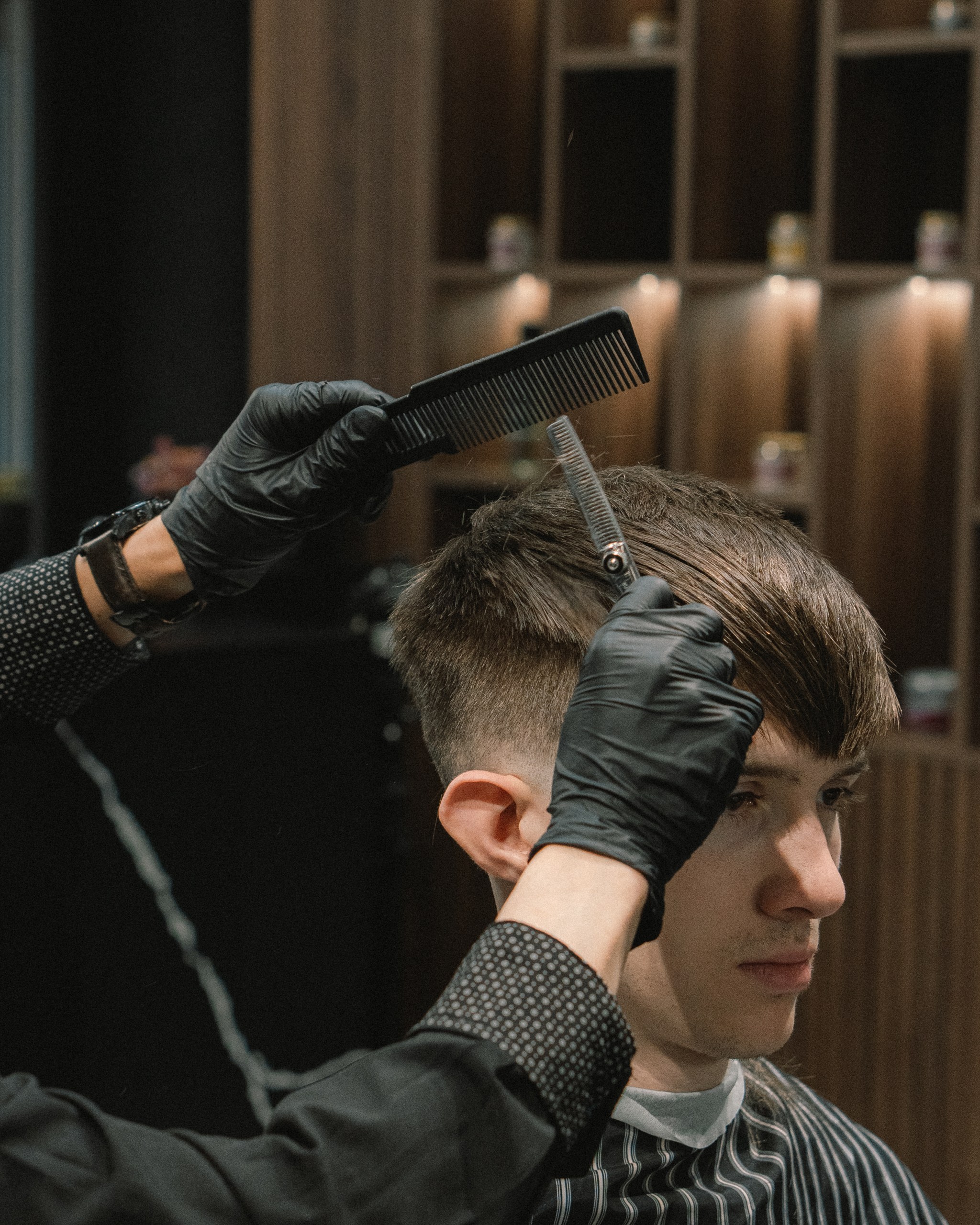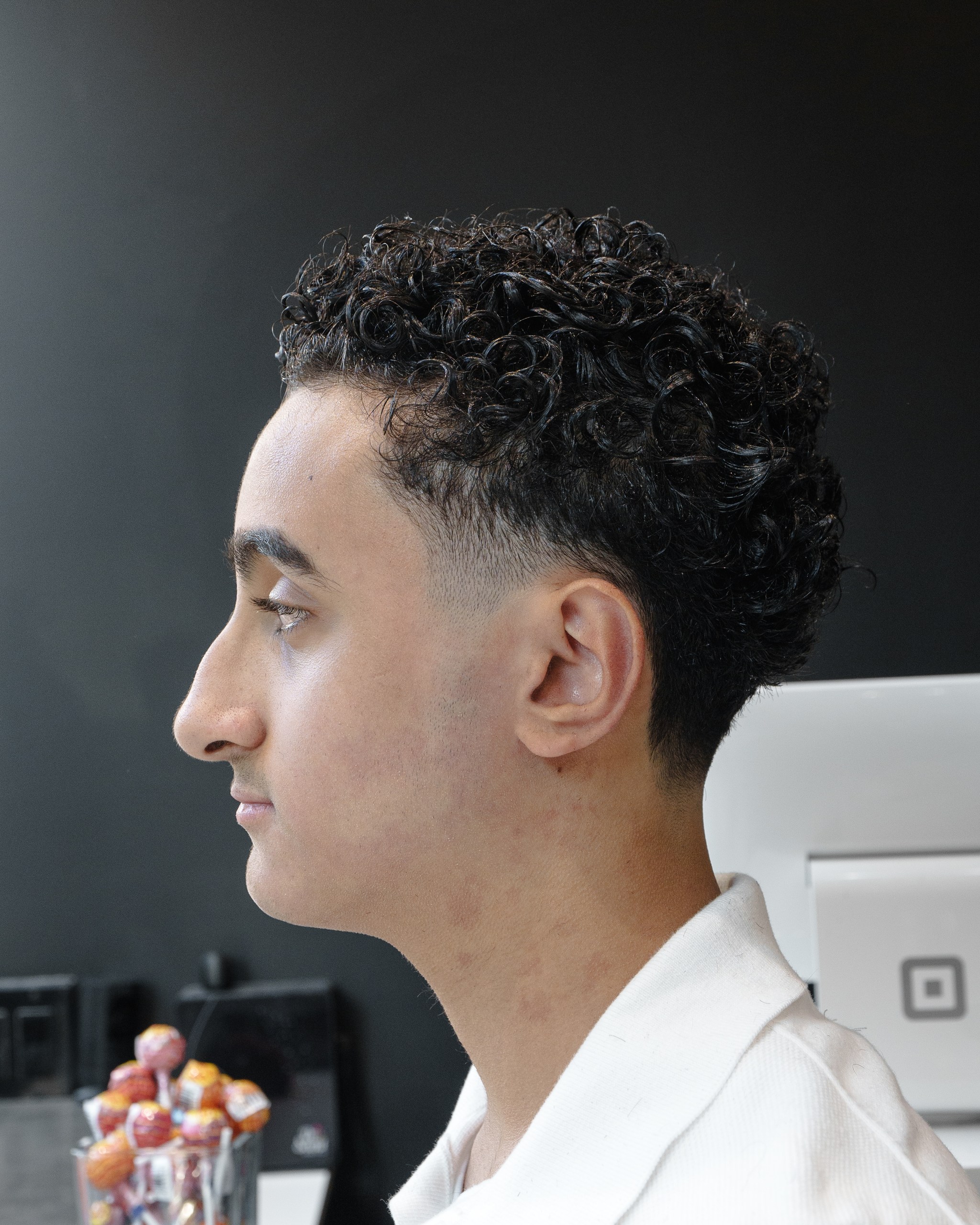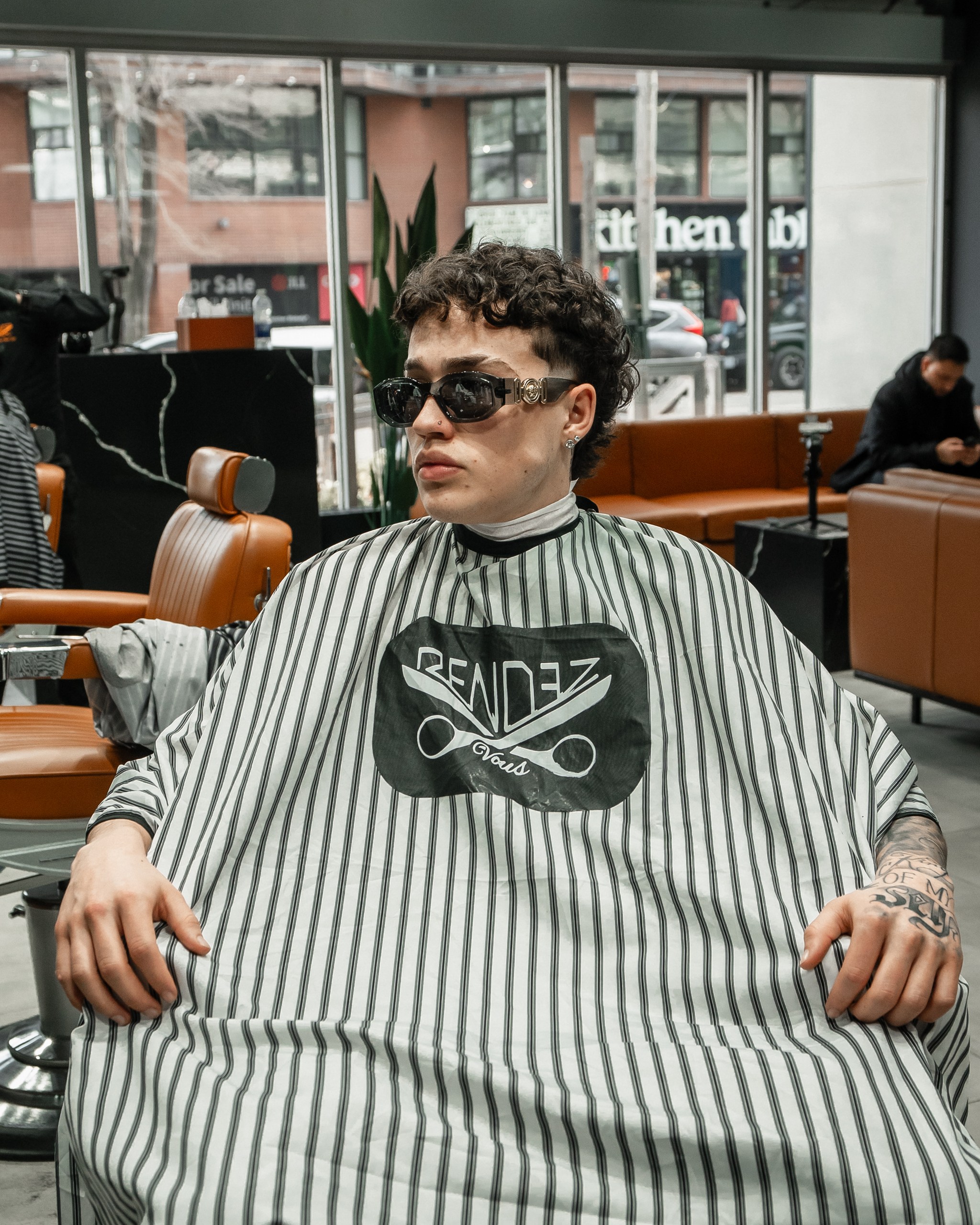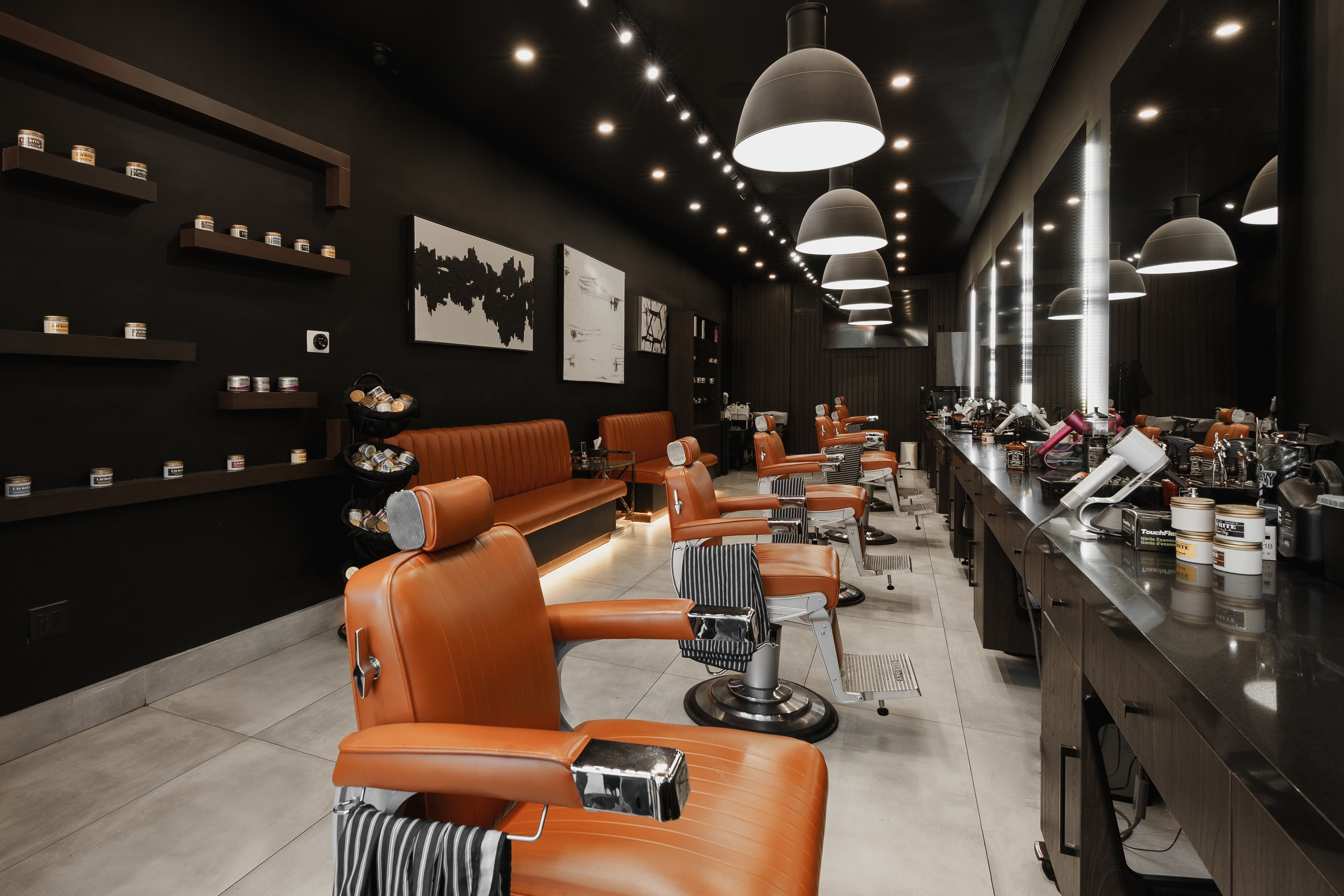There's a specific moment most guys experience but rarely talk about: you get your usual haircut from your regular barber, the execution is perfect, but somehow it just doesn't look right anymore. Not bad exactly, just... off.
Your first instinct is to blame the barber or think they cut it differently this time. But often the barber executed exactly what you asked for, exactly how they always do it. The problem isn't the haircut – it's that your relationship with that haircut has changed.
At Rendezvous Barbers, we see guys clinging to styles that used to work but don't anymore, frustrated because they can't identify what shifted. The haircut isn't wrong – it's just wrong for now. Understanding what changes between you and your haircut helps you recognize when it's time to reassess rather than doubling down on something that's stopped serving you.
Here are the seven most common reasons your trusted haircut stops working.
1. Your Face Actually Changed Shape
This happens more often and more subtly than most guys realize. Your face isn't static – it changes based on multiple factors, and these changes affect which haircuts complement versus contradict your features.
Weight fluctuations are the obvious culprit. Gaining or losing 15+ pounds redistributes fat in your face, potentially changing your face from angular to rounder (or vice versa). A haircut that balanced a lean face might emphasize roundness after weight gain. Conversely, styles that softened a fuller face might look too severe on a leaner face.
Muscle development particularly in neck and jaw areas changes your lower face proportions. Guys who start serious training often find their face structure shifting as they build muscle, making previous haircuts feel disproportionate.
Aging gradually changes face shape through fat redistribution, skin elasticity loss, and bone structure changes. The face you had at 25 isn't the face you have at 35, even at the same weight. Haircuts that flattered younger features might not work with mature face structures.
Facial hair changes alter your face's apparent shape dramatically. Growing a beard effectively changes your face structure by adding dimension to your lower face. A haircut chosen for clean-shaven faces might need adjustment once you're bearded. Similarly, shaving off a long-term beard suddenly reveals your actual jaw and chin, potentially requiring haircut adaptation.
The solution isn't necessarily a completely different style – often it's adjusting proportions, changing length ratios, or modifying the overall balance to work with your current face rather than your past face.
2. Your Hair Texture Changed
Hair texture isn't permanent – it evolves throughout life, and these changes affect which cuts work and how they behave.
Aging typically alters texture in specific ways. Hair often becomes coarser and more wiry with age. Grey hair has different texture than pigmented hair – it's often more coarse, resistant to styling, and behaves differently with products. What worked with your natural hair color might fight against grey hair's different characteristics.
Hormonal changes affect hair texture significantly. Testosterone levels shifting with age can change hair thickness, growth patterns, and texture. Some guys notice their hair becoming finer or thicker during their 30s and 40s.
Environmental damage accumulates over time. Years of Toronto winters, summer sun exposure, chlorine from swimming, and styling heat can progressively change hair texture from healthy and cooperative to dry and unmanageable.
Medication effects can alter hair texture. Certain prescriptions change hair characteristics as side effects. If you started or stopped medications, your hair might genuinely be different now.
When texture changes, the haircut that worked with your previous texture might not accommodate your current hair's behavior. Cuts relying on natural wave don't work when hair becomes straighter. Styles requiring smooth, straight hair fail when hair develops wave or curl.

3. Your Lifestyle Shifted Dramatically
The haircut that worked perfectly for your previous life situation might be completely impractical for your current reality.
Career changes often demand grooming adaptation. Moving from creative industries to corporate environments might mean your edgier haircut now feels inappropriate. Conversely, leaving corporate roles for creative or entrepreneurial work might make conservative cuts feel stifling.
Activity level changes affect haircut practicality significantly. Guys who start serious training routines – gym 5-6 days weekly, running, cycling, swimming – discover that cuts requiring careful styling don't survive daily workouts. Conversely, guys who stop active routines might want more interesting styles since they're no longer prioritizing pure practicality.
Relationship status shifts sometimes trigger grooming reassessment. Single guys often invest more grooming effort than guys in long-term relationships who prioritize convenience. Neither approach is wrong, but your haircut should match your actual styling commitment.
Parenting changes everything about personal maintenance. New parents discover that 20-minute morning styling routines are fantasies when you're dealing with an infant. Haircuts need to work with 2-minute-maximum grooming time.
Commute changes affect daily haircut exposure to elements. Starting to bike commute means your carefully styled hair gets compressed under helmets daily. Moving from public transit to driving might mean less weather exposure affecting your cut.
The haircut isn't failing you – your life changed and the cut didn't adapt. Reassessing based on current lifestyle rather than past circumstances leads to more practical choices.
4. Fashion and Style Context Evolved
What reads as stylish isn't absolute – it's relative to current fashion context. Your haircut from 2019 might technically look fine but feel dated in 2025 simply because style reference points shifted.
Trend cycles affect men's grooming significantly. The heavily faded, super-tight sides that dominated 2018-2020 feel different now that natural texture and longer styles gained prominence. Your cut might be well-executed but contextually dated.
Your personal style evolved in ways your haircut didn't follow. If you've updated your wardrobe, changed how you dress, or developed more defined personal style, your haircut might not match anymore. The cut that worked with your old style feels disconnected from your current presentation.
Professional environment norms shifted particularly post-COVID. Many Toronto workplaces relaxed grooming standards, making previously risky styles now acceptable. Conversely, some industries tightened standards. Your cut might not match current professional context.
Social circle influences matter more than we usually admit. If your friend group or professional network has distinct grooming norms, your haircut exists in that context. Styles that felt normal in previous contexts might feel out of place in new social environments.
This doesn't mean chasing every trend or changing styles constantly. It means recognizing when your haircut has become a time capsule from a different style era and considering whether updating serves your current life.
5. You're Fighting Your Natural Growth Patterns
Sometimes haircuts stop working because you're finally noticing that you've been fighting your hair's natural inclinations all along, and you're tired of the battle.
Cowlicks and whorls create directional growth that some cuts work with and others fight against. A style that requires your hair to lay opposite to its natural direction might have always been a daily struggle, but you're only now recognizing the effort isn't worth it.
Hairline changes particularly temporal recession or frontal thinning, mean styles designed for full hairlines don't work the same way. You might be styling around areas that have less hair than when you chose the cut.
Hair density variations across your scalp mean some areas behave differently than others. Cuts that assume uniform density struggle when reality doesn't match that assumption.
Seasonal behavior differences make Toronto hair particularly challenging. Hair that behaves perfectly in winter humidity might be unmanageable in summer. If you chose your cut during one season, it might not work year-round.
The realization often comes gradually – you notice you're spending increasing time and product trying to make your hair do what the cut requires. Eventually you recognize that working with rather than against your hair's natural inclinations would be easier.
6. Your Maintenance Commitment Changed
The haircut that worked when you were willing to invest 15 minutes daily and visit the barbershop every three weeks might not work when your priorities or circumstances change that commitment level.
Time availability shifts happen for countless reasons. New job demands, family responsibilities, health situations, or just different priorities mean grooming time gets compressed. The cut requiring significant daily effort becomes impractical.
Budget reallocation might mean you're less willing to spend on frequent barbershop visits. Cuts requiring touch-ups every 2-3 weeks become expensive when you're budgeting differently.
Interest level changes in grooming aren't a character flaw – they're normal priority shifts. You might have enjoyed the grooming routine previously but now find it tedious. Your haircut should match your actual interest level, not some aspirational version.
Product fatigue sets in when you're tired of using multiple products daily to make a cut work. Styles requiring heat styling, multiple products, or complex routines might have been fun initially but become burdensome over time.
Barbershop relationship changes affect maintenance willingness too. If your longtime barber left or retired, the prospect of building a new relationship while maintaining a high-maintenance cut might feel overwhelming.
Being honest about your actual maintenance commitment rather than your theoretical ideal commitment leads to better cut choices.

7. You're Just Bored
Sometimes the most honest answer is the simplest: you're tired of looking at the same haircut regardless of whether it objectively works.
Style stagnation feels different from other issues because nothing technically changed. The cut still works for your face, hair, and lifestyle. You're just bored of it after years of repetition.
Visual fatigue with your own appearance is real. Humans crave novelty, and seeing the same haircut in the mirror for years creates desire for change purely for change's sake.
Curiosity about alternatives builds over time. You wonder what you'd look like with different cuts, whether other styles might suit you, and whether you've been playing it too safe.
Social media influence exposes you to constant style variation, making your consistent cut feel potentially limiting compared to the variety you see others experimenting with.
Boredom is a legitimate reason to change haircuts. You don't need deeper justification. The cut's technical appropriateness doesn't obligate you to keep it forever.
However, understanding that boredom is the actual motivation – rather than thinking something is wrong with the cut – helps you make better change decisions. Change for novelty's sake differs from change to solve problems.
Recognizing the Difference: Temporary vs. Permanent Changes
Not every feeling that your haircut isn't working means you need a different cut. Some situations call for adjustment, others for complete change.
Temporary situations that don't warrant cutting changes include short-term weight fluctuations, temporary job situations, brief activity level changes, or seasonal hair behavior. These pass – don't make permanent cut changes for temporary circumstances.
Permanent or long-term changes that do warrant reassessment include sustained weight changes, permanent career shifts, lasting lifestyle modifications, progressive aging changes, or genuine style evolution.
The distinction matters because reactive cut changes during temporary situations often create regret once circumstances normalize.
How to Communicate Changes to Your Barber
When you recognize your haircut needs reassessment, communicating effectively with your barber prevents misunderstanding.
Explain what changed rather than just saying the cut doesn't work. "I started working out daily and need something lower maintenance" gives direction. "It just doesn't look right" leaves your barber guessing.
Acknowledge the cut itself is fine if that's true. Many guys blame barbers for cuts that are well-executed but no longer appropriate. Saying "you've been cutting this great, but my situation changed" maintains the relationship.
Be specific about new priorities. If maintenance commitment changed, say so. If your face changed, mention it. If you're just bored and want change, that's valid information.
Provide reference points for new directions if you have ideas, but remain open to barber input. They might see solutions you haven't considered.
Schedule adequate consultation time rather than expecting major reassessment during your regular 45-minute appointment slot.
The Cost of Style Stagnation
Maintaining haircuts past their relevance has real costs beyond just looking dated.
Professional impact from outdated grooming can be subtle but real. Looking stuck in previous eras affects how colleagues and clients perceive you.
Personal confidence diminishes when you know your appearance isn't optimized. Even if others don't notice, your awareness that something is off affects how you carry yourself.
Wasted maintenance effort on cuts that aren't working means you're investing time and money without proportional returns. Better to change than continue funding diminishing results.
Opportunity cost of not looking your current best affects social situations, professional opportunities, and personal satisfaction.
The Bottom Line
Haircuts that stop working aren't failing you – they're revealing that something fundamental changed requiring style reassessment. Whether your face shape shifted, hair texture evolved, lifestyle demands changed, or you're simply bored, recognizing the actual reason helps you make better decisions about whether and how to change.
The haircut you loved for years provided good service for that period. That doesn't mean it owes you lifetime performance. Styles have expiration dates based on changing circumstances, not quality decline.
Reassessing your style when circumstances change isn't vanity or fickleness – it's appropriate adaptation. The goal is haircuts that work for your current reality, not preserving styles that matched previous versions of your life.
Book your appointment today and have real conversations about what changed and what might work better now.













